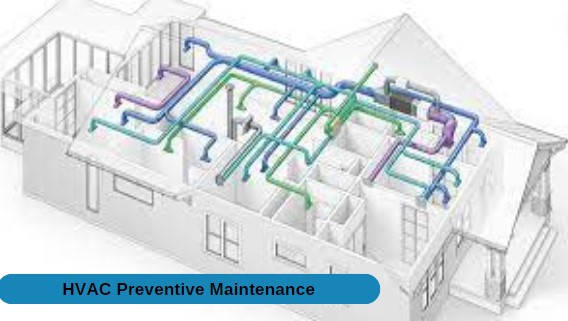
HVAC Preventive Maintenance Can Maximize Energy Efficiency
Viki Dongare |
30 Mar 2024 |
07:46 AM
- Understanding the Significance of HVAC Preventive Maintenance
- Key Objectives and Goals
- The Components of Routine HVAC Maintenance
- Exploring Essential Tasks and Procedures
- Understanding the Role of Each Component
- The Four Phases of Planned HVAC Maintenance
- The Benefits of HVAC Preventive Maintenance for Commercial Buildings
- Checklist for HVAC Preventive Maintenance
- Tips for Implementation and Monitoring
- The Importance of Preventive Maintenance on Your HVAC System
- Types and Components of HVAC Systems
- Detailed Breakdown of System Components
- Signs of HVAC Inefficiency
- HVAC Preventative Maintenance Improves IAQ & Energy Efficiency
- HVAC Optimization Strategies
- Conclusion

The 7 Best Work Order Management System
Kirti Prakash 22 Jun 2024 | 07:02 AMDiscover the ideal workorder maintenance system to streamline your operations. Our comprehensive guide covers the latest in task management, scheduling efficiency, and maintenance tracking to boost productivity and minimize downtime....
Understanding the Significance of HVAC Preventive Maintenance
HVAC systems play a pivotal role in maintaining comfortable indoor environments, but their efficient operation relies heavily on proactive maintenance. In this article, we delve into the crucial practice of HVAC preventive maintenance and its impact on energy efficiency. By understanding the significance of this maintenance approach, homeowners and businesses can unlock a plethora of benefits.
Key Objectives and Goals
HVAC preventive maintenance is not merely a reactive measure to address system failures; rather, it's a proactive strategy aimed at optimizing system performance and longevity. The primary objectives revolve around ensuring the smooth operation of HVAC systems while minimizing energy consumption and associated costs. By conducting regular inspections, cleaning, and tune-ups, the goal is to detect and address potential issues before they escalate, thereby enhancing system reliability and indoor comfort.
The Components of Routine HVAC Maintenance
Routine HVAC maintenance encompasses a series of essential tasks and procedures aimed at ensuring the optimal performance and longevity of HVAC systems. One of the primary components involves thorough inspection and cleaning of air filters to prevent airflow restrictions and maintain indoor air quality. Additionally, inspecting and lubricating moving parts such as fan motors and belts help minimize friction and reduce energy consumption.
Exploring Essential Tasks and Procedures
Another critical aspect is examining and calibrating thermostat settings to ensure accurate temperature control and energy efficiency. Furthermore, inspecting and tightening electrical connections helps prevent system failures and electrical hazards. Checking refrigerant levels and ductwork for leaks is also crucial for maintaining system efficiency and preventing energy wastage.
Understanding the Role of Each Component
By understanding the role of each component in routine HVAC maintenance, homeowners and businesses can proactively address potential issues and optimize system performance, ultimately leading to improved energy efficiency and reduced operating costs.
The Four Phases of Planned HVAC Maintenance
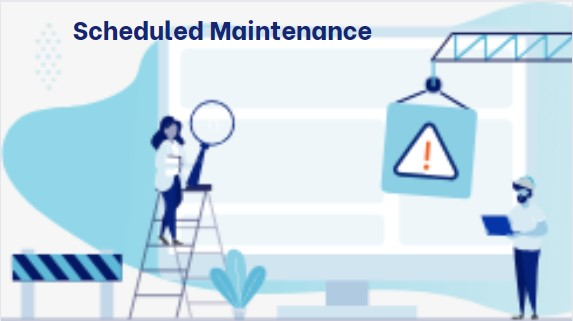
Assessment Phase - The assessment phase involves a comprehensive evaluation of the HVAC system's current condition and performance. This includes conducting thorough inspections, analyzing energy consumption patterns, and identifying potential areas for improvement. By assessing the system's efficiency and identifying any existing issues, technicians can develop tailored maintenance plans to address specific needs and maximize energy efficiency.
Planning Phase - During the planning phase, maintenance schedules and procedures are carefully devised based on the findings from the assessment phase. This involves determining the frequency of maintenance tasks, allocating resources, and coordinating logistics to ensure minimal disruption to operations. Additionally, planning may involve prioritizing maintenance activities based on criticality and budget constraints to optimize the use of resources and achieve desired outcomes.
Execution Phase - In the execution phase, planned maintenance tasks are carried out according to the established schedule and procedures. This may include cleaning or replacing air filters, inspecting and lubricating mechanical components, checking refrigerant levels, and calibrating thermostat settings. Technicians execute each task meticulously to ensure thoroughness and adherence to safety standards.
Evaluation Phase - The evaluation phase involves assessing the effectiveness of the maintenance activities performed during the execution phase. This includes measuring key performance metrics such as energy consumption, system reliability, and indoor air quality. By comparing pre- and post-maintenance data, technicians can evaluate the impact of maintenance efforts on energy efficiency and identify areas for further improvement. Additionally, any issues or deficiencies discovered during the evaluation phase are addressed to continuously enhance the effectiveness of planned HVAC maintenance checklist.
The Benefits of HVAC Preventive Maintenance for Commercial Buildings
Energy Efficiency Implications - Implementing HVAC preventive maintenance in commercial buildings leads to significant energy efficiency improvements. Regular maintenance tasks such as cleaning coils, replacing filters, and optimizing system settings ensure that HVAC systems operate at peak efficiency. This results in reduced energy consumption, lower utility bills, and a smaller carbon footprint, aligning with sustainability goals.

Cost Savings and ROI Analysis - HVAC preventive maintenance offers substantial cost savings for commercial building owners and operators. By preventing system breakdowns, minimizing energy waste, and extending equipment lifespan, maintenance efforts translate into reduced repair costs and capital expenditures. Conducting a thorough ROI analysis reveals the long-term financial benefits of investing in preventive maintenance, including improved operational efficiency and increased asset value.
Enhanced Comfort and Productivity - Maintaining optimal indoor conditions is essential for promoting occupant comfort and productivity in commercial settings. Regular HVAC maintenance ensures consistent temperature control, proper ventilation, and optimal air quality, creating a comfortable and healthy work environment. Enhanced comfort levels lead to higher employee satisfaction, reduced absenteeism, and increased productivity, ultimately contributing to the overall success of the business.
Checklist for HVAC Preventive Maintenance
Comprehensive Checklist for Efficient Maintenance
A comprehensive checklist for HVAC preventive maintenance is essential for ensuring efficient operation and prolonging the lifespan of your system. Here are key components to include:
-
Inspect and Clean Air Filters: Regularly check and clean or replace air filters to maintain optimal airflow and indoor air quality.
-
Check Thermostat Settings: Verify thermostat settings for accuracy and adjust as needed to optimize energy efficiency and comfort.
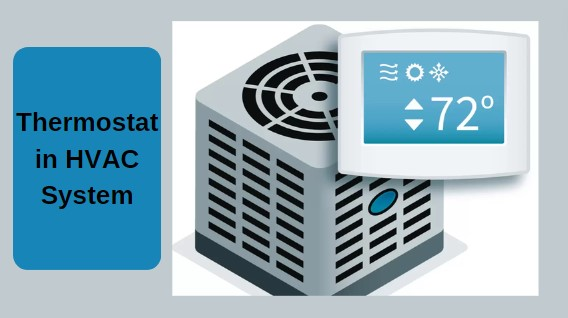
-
Inspect Electrical Connections: Ensure all electrical connections are tight, secure, and free of corrosion to prevent system malfunctions or hazards.
-
Lubricate Moving Parts: Properly lubricate moving parts such as fan motors and blower motors to reduce friction and energy consumption.
-
Inspect and Clean Coils: Check evaporator and condenser coils for dirt and debris buildup, and clean them to improve heat transfer efficiency.
-
Check Refrigerant Levels: Monitor refrigerant levels and ensure they are within the recommended range to maintain system efficiency and performance.
-
Inspect Ductwork: Examine ductwork for leaks, gaps, or blockages that can compromise airflow and HVAC efficiency.
-
Test System Controls: Test system controls, including sensors, relays, and switches, to ensure proper operation and responsiveness.
-
Verify System Operation: Run the system through a full cycle to verify proper operation and identify any abnormalities or inefficiencies.
-
Document Maintenance Activities: Keep detailed records of maintenance tasks performed, including dates, observations, and any necessary repairs or adjustments.
Tips for Implementation and Monitoring
Implementing and monitoring this comprehensive checklist for HVAC preventive maintenance will help maximize energy efficiency, improve system reliability, and minimize operating costs over time. Regularly review and update the checklist to adapt to changing needs and ensure ongoing effectiveness.
The Importance of Preventive Maintenance on Your HVAC System
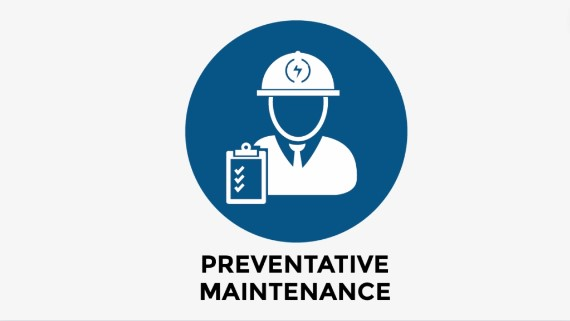
Reducing Energy Consumption
Proper maintenance ensures your HVAC system operates efficiently, leading to lower energy bills and reduced environmental impact.
Improving In-Home Air Quality
Clean air filters and ducts help remove pollutants, allergens, and contaminants, promoting healthier indoor air for you and your family.
Prolonging Your System's Life
Regular upkeep prevents wear and tear, extending the lifespan of your HVAC equipment and minimizing the need for costly replacements.
Enhancing Comfort Levels
A well-maintained HVAC system delivers consistent temperatures and airflow, creating a comfortable living environment year-round.
Preventing Costly Repairs
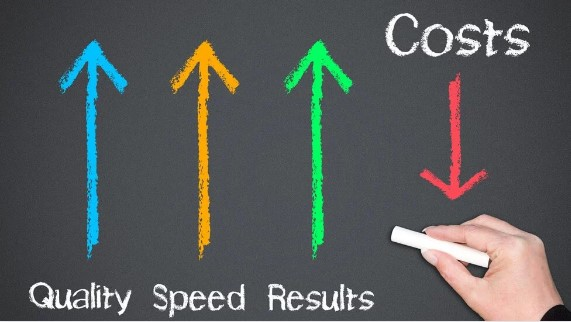
Identifying and addressing minor issues early prevents them from escalating into costly repairs or system failures.
Ensuring Home Safety
Regular maintenance checks electrical connections, gas lines, and ventilation systems to mitigate safety hazards and ensure peace of mind for homeowners.
Types and Components of HVAC Systems
Overview of Different HVAC System Types
HVAC systems are diverse, catering to various needs and environments. Common types include:
-
Split Systems: Comprising both indoor and outdoor units, split systems are versatile and suitable for residential and small commercial spaces.
-
Packaged Systems: Ideal for limited spaces, packaged systems integrate all components into a single unit placed outdoors, commonly used in commercial buildings.
-
Ductless Mini-Split Systems: Offering flexibility and zoning capabilities, ductless mini-split systems provide individualized temperature control for different areas without ductwork.
-
Heat Pumps: Efficiently heat and cool spaces by transferring heat between indoor and outdoor environments, making them ideal for moderate climates.
Detailed Breakdown of System Components
Components of HVAC systems include:
-
Air handlers
-
Compressors
-
Condensers
-
Evaporator coils
-
Thermostats
-
Ductwork
Understanding these components is crucial for effective HVAC maintenance and performance optimization.
Signs of HVAC Inefficiency
Recognizing common indicators of HVAC inefficiency is crucial for timely intervention and maintenance. Key signs include:
-
Increased Energy Usage: Sudden spikes in energy bills without a corresponding increase in usage may indicate HVAC inefficiency.
-
Decrease in Efficiency: Reduced heating and cooling systems performance despite consistent settings signals potential inefficiency.
-
Poor Indoor Air Quality: Dusty or musty hot or cold air, along with allergies or respiratory issues, suggests ineffective filtration or ventilation.
-
Frequent Repairs: A surge in repair costs or frequent breakdowns indicates underlying inefficiencies in the HVAC system.
Understanding these signs enables proactive measures such as preventative maintenance program or predictive maintenance to address inefficiencies and prevent costly repairs.
HVAC Preventative Maintenance Improves IAQ & Energy Efficiency
Impact on Indoor Air Quality (IAQ)
Routine maintenance, including air filter changes and duct cleaning, removes pollutants and allergens, ensuring cleaner and healthier indoor air for occupants. This leads to reduced respiratory issues and improved overall comfort and well-being.
Strategies for Enhancing Energy Efficiency
Maintenance tasks such as optimizing system settings, sealing duct leaks, and ensuring proper insulation enhance energy efficiency, resulting in lower utility bills and reduced environmental impact.
By prioritizing regular preventive maintenance, building owners can achieve optimal IAQ and energy efficiency simultaneously, promoting a healthier and more sustainable indoor environment.
HVAC Optimization Strategies
To maximize the efficiency and performance of HVAC systems, implementing optimization strategies is crucial. Here are key strategies to consider:
Schedule Routine Inspections
Regular inspections allow for the early detection of potential issues, preventing costly repairs and optimizing system functionality.
Implement Advanced Air Filtration Systems
Upgrading to advanced air filtration systems improves indoor air quality by capturing a wider range of contaminants, promoting a healthier environment.
Utilize Building Automation Systems (BAS)
BAS enables automated control and monitoring of HVAC systems, optimizing energy usage based on occupancy schedules and environmental conditions.
Incorporate Variable Speed Drives
Variable speed drives adjust motor speeds to match heating and cooling demands, enhancing energy efficiency and reducing operational costs.
Integration of Renewable Energy Sources
Integrating renewable energy sources such as solar or geothermal power reduces dependency on traditional energy sources, further lowering energy consumption and costs.

By adopting these HVAC optimization strategies, building owners can save money, reduces energy costs and consumption, and prolong the lifespan of their systems while ensuring maximum efficiency and comfort for occupants.
Conclusion
Prioritizing HVAC preventive maintenance and optimization strategies is paramount for achieving energy efficiency, reducing costs, and ensuring optimal indoor comfort. By implementing routine inspections, advanced filtration systems, and utilizing automation technologies, building owners can mitigate the risk of expensive repairs and decrease energy consumption. Moreover, integrating renewable energy sources offers a sustainable solution to further reduce dependency on conventional energy.
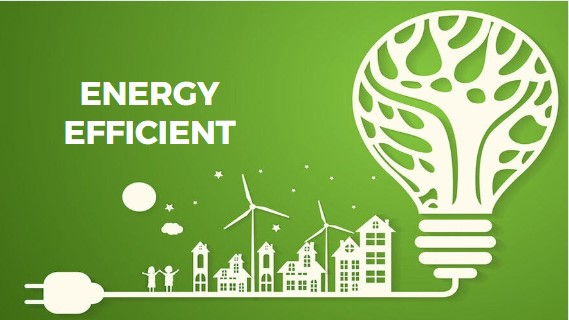
Proactive measures not only extend the lifespan of HVAC systems but also enhance indoor air quality, promoting healthier environments. By embracing these practices, including air conditioning, air conditioner, and AC units, building owners can save money, reduce environmental impact, and maintain maximum efficiency in their HVAC systems for years to come.